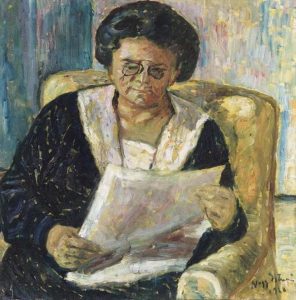Arkiv, Bøker
Chastity: Anmeldelser
Å utgi en bok, er å slippe den løs for å gå sin egen vei. Forfatteren ser undrende på mens boken begir seg til uventede steder. Noen lesere vil like den, andre ikke. Noen vil ha dyp innsikt, andre vil misforstå. Kritikk – som er utleggende, ikke nødvendigvis negativ – er del av en samtale litteraturen muliggjør. Det er storartet å se at samtalen lever og trives selv i en digital verden. Det er toskete å krangle med kritikk, men nyttig å forholde seg til den. Slik kan forfatteren, kanskje andre også, lære mye. Så det vil jeg forsøke å gjøre.
It was by pure chance that Chastity ended up being published in the middle of the Synod on Synodality, but this coincidence was the point of departure for a spirited presentation of the book that appeared on Settimo Cielo. The author, Sandro Magister, submits that the synod convened in the Vatican is complemented by a synod extra muros. He considers Chastity a useful expression of this broader momentum, linking the contribution of the book to the Letter on Human Sexuality published by the Bishops’ Conference of the Nordic Countries this Lent, a letter that pointed, precisely, to ‘the limitations of a purely secular discourse on sexuality’, calling for it to be enriched and deepened.
A review rich in insight appeared in the Norwegian newspaper Dagen (English version here), which has an evangelical Christian profile. Victoria Bø reads the book as an exercise in using ‘language to strip down empty ideals in order to let us see the human being wrapped in hope, embraced by God’s love and grace’. She is alert to themes and images used compositionally to broaden the semantic horizon. It gave me joy to find her picking up details such as this: ‘We discover that the quotation from Rilke comes from a book Etty Hillesum put under her pillow forty pages earlier.’ Having wondered whether there were too many illustrative details, she concludes that ‘we get to where we’re meant to go through both metaphors and stories.’
Professor Armando Pego’s thoughtful reading taught me new things. In a beautiful text, he notes the kinship between Chastity and The Shattering of Loneliness. This is intentional. From the outset I intended the two books as panels in a diptych, complementary forays into a Christian anthropology that seeks to read — and hopefully to illumine — the Biblical and patristic patrimony through acquisitions from literature and the arts. My aim has been to ground the Christian proposition in recognisably incarnate human terms. What I hadn’t thought of was that this work could be read in terms of a medieval category: ‘Chastity is neither a treatise nor a manual nor an apology nor a sermon nor, even pushing the genre’s ample limits, a simple essay. In the fullness of that term, it seeks to be an oratio, discourse that invites contemplation.’ That is indeed so. In Pego’s piece that aspiration has found accomplishment.
Another intelligent Spanish perspective was published in El Debate, in a review by José María Sánchez Galera. He recognises a ‘lightly Ratzingerian touch’ in Chastity. He is sensitive to its prospective view of human nature, that is, to the view that integration and perfection of our humanity come about through the realisation of potential: we see ourselves most truly in terms of what we have the ability by grace to become, not in terms of what we perceive ourselves (perhaps without any notion of ‘grace’) to be here and now. Contemporary secular anthropology has largely divested itself of the category of hope. That is why a Christian complement is urgently needed. Sánchez Galera points out that ‘the manner in which the theme of chastity — and of Christian anthropology — is presented in this book sounds novel even though its content is not; one might say that it goes back to using wineskins we had forgotten we had, which turn out to be useful’.
The Tablet, in an Anglican reading of Chastity, found its scholarship ‘dodgy’, its development ‘circuitous and sometimes tendentious’, its argument ‘fractured’, its method ‘disingenuous and unnecessary’, its assumption ‘that there are two sexes, two genders’ inadmissible. A reviewer finding so much to displease in principle will flick through the pages quickly, a little intemperately. This probably explains why Teresa Morgan pays scant attention to the books’s underpinning and themes, and why, in presenting its central chapter as an account of ‘the tensions and contradictory passions which militate against chastity’, she perfectly inverts that chapter’s explicit function. It is natural then that she does not see the point of the testimonies adduced. Being a teacher of youth, she gives marks for effort. One can only hope she has been able to recycle the book responsibly.

Istvan Nagy, Newspaper Reader (1920). Wikimedia Commons
